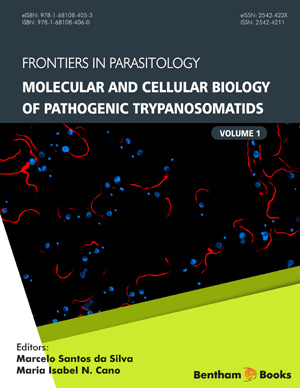Abstract
As members of a highly divergent group of eukaryotes, trypanosomatids present peculiar mechanisms of gene expression. These protozoan parasites have transcription and processing machineries that constitutively transcribe clusters of nonrelated genes into polycistronic pre-mRNAs, which are subsequently trans-spliced into monocistronic transcripts. Because of this, control of gene expression relies mainly on post-transcriptional mechanisms that are, for the most part, mediated by RNA binding proteins that control steady-state levels of mRNAs and/or their translation rates. Using primarily Trypanosoma brucei as a model, several groups have begun to elucidate the basic regulatory mechanisms and to define the cellular factors controlling transcription, processing, degradation and translation of mRNAs in trypanosomatids. This chapter describes studies that have been focused on a subset of genes that are differentially expressed during the life cycle of T. brucei, T. cruzi and few species of Leishmania. Although a predominance of regulatory pathways acting at a post-transcriptional level is found for most genes from all three parasites, it is also evident that the regulatory strategies chosen by different trypanosomatid species are not similar. Because of their complex and diversified gene regulatory machinery, T. brucei, T. cruzi and Leishmania spp. are able to respond rapidly to the drastic environmental changes they face during their life cycle, particularly when they move between their different hosts.
Keywords: Epigenetics, Gene expression, Polyadenylation, Post-transcription, RNA polymerase, RNA promoter, Trans-splicing, Transcription, Untranslated region, VSG.






















